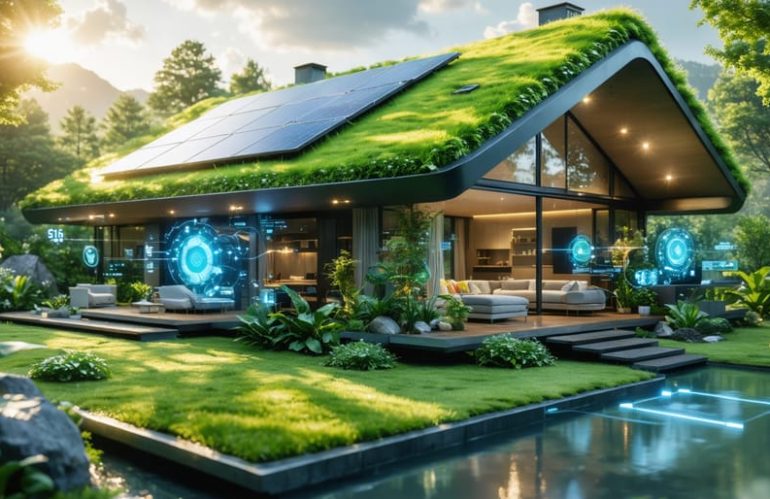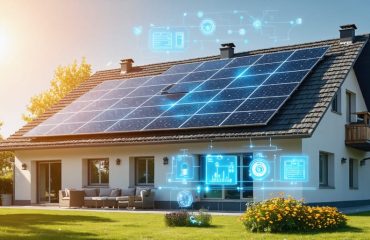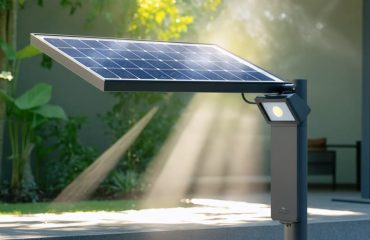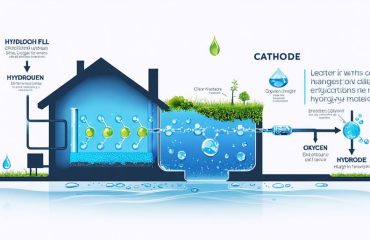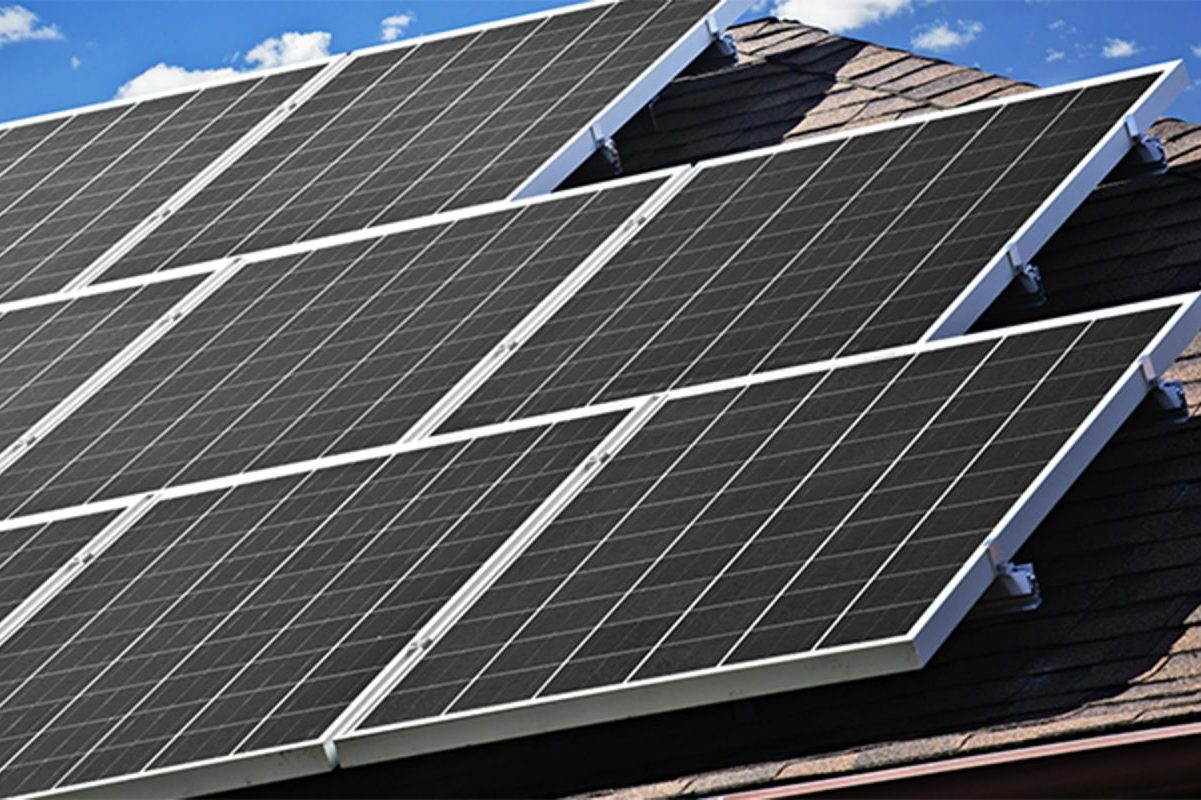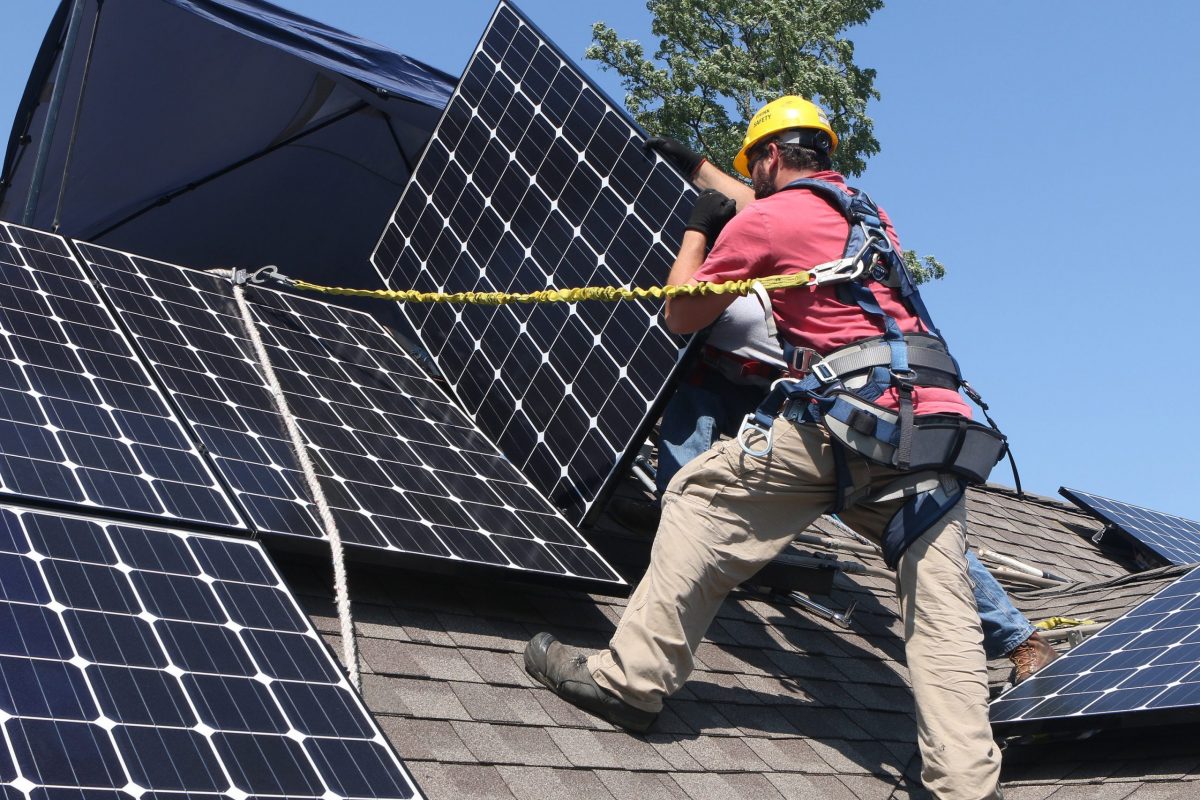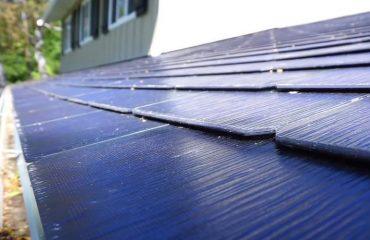Transform your home into an energy-efficient powerhouse while helping to maximize your solar power performance. Smart energy upgrades not only reduce your monthly bills but can increase your home’s value by up to 10%. From enhanced insulation to smart thermostats, these ten home improvements work together to create a comprehensive energy-saving system that pays for itself over time.
The average American household wastes 35% of its energy through inefficient systems and outdated equipment. By implementing these proven solutions, homeowners typically save $500-1,200 annually while reducing their carbon footprint. Whether you’re already using solar power or planning to install panels in the future, these upgrades form the foundation of a truly energy-efficient home that works smarter, not harder.
Let’s explore the most impactful improvements you can make today, ranked by return on investment and compatibility with solar energy systems.
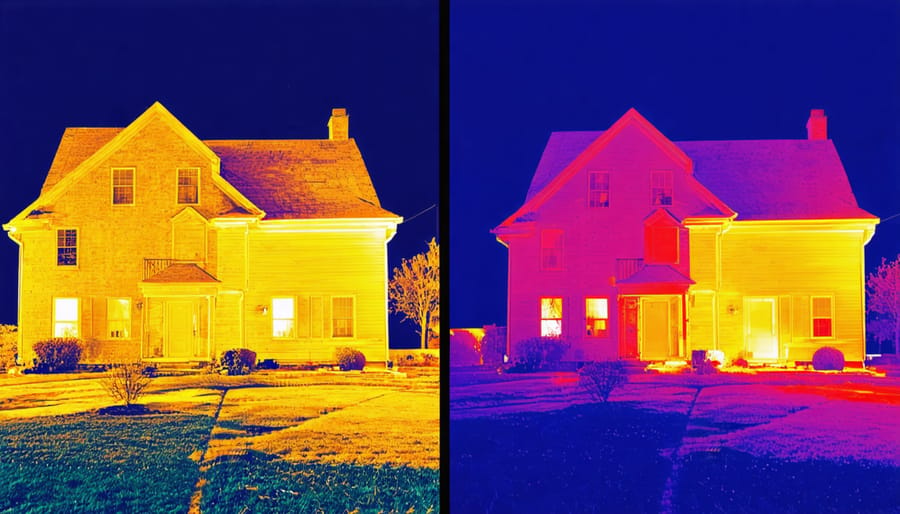
Smart Insulation Solutions
Advanced Wall and Attic Insulation
Modern insulation technology has revolutionized home energy efficiency, offering superior materials like spray foam and mineral wool that outperform traditional fiberglass. These advanced options create a more effective thermal barrier, reducing heat loss in winter and heat gain in summer. Spray foam insulation, for instance, expands to fill every crack and crevice, creating an airtight seal that can cut energy costs by up to 30%.
For attics, a combination of blown-in cellulose and rigid foam boards provides exceptional R-value while being eco-friendly. Many of these materials are made from recycled content and are treated with non-toxic fire retardants. Professional installation ensures proper ventilation and moisture control, preventing common issues like ice dams and mold growth.
The investment in advanced insulation typically pays for itself within 3-5 years through reduced energy bills, and many utilities offer rebates to offset initial costs. Plus, better insulation means your heating and cooling systems work less, extending their lifespan and improving overall home comfort.
Weatherization and Air Sealing
Proper weatherization and air sealing can significantly reduce your home’s energy consumption by preventing heated or cooled air from escaping. Start by identifying common air leak points around windows, doors, electrical outlets, and pipe penetrations. Apply weatherstripping around movable components like doors and windows, and use caulk for stationary gaps and cracks.
Pay special attention to your attic and basement, where air leaks are most common. Install door sweeps under exterior doors and use foam gaskets behind outlet covers on exterior walls. For larger gaps around pipes and vents, use expanding foam sealant to create an airtight barrier.
Professional energy auditors can conduct a blower door test to identify hidden air leaks and provide targeted recommendations. While DIY weatherization is possible, professional installation ensures optimal results and can reduce your heating and cooling costs by up to 15%. Remember to maintain proper ventilation while sealing your home to ensure healthy indoor air quality.
High-Efficiency Windows and Doors
Double and Triple Pane Options
When it comes to window efficiency, upgrading to double or triple-pane windows can significantly reduce your energy costs. Double-pane windows feature two glass panels with an insulating air or gas layer between them, providing twice the protection against heat loss compared to single-pane windows. These windows typically reduce energy bills by 15-20%.
Triple-pane windows take efficiency even further with three glass panels and two insulating layers. While they cost about 10-15% more than double-pane options, they offer superior insulation and can reduce energy loss by up to 50% compared to single-pane windows. They’re particularly beneficial in extreme climates.
Both options come with energy efficiency ratings called U-factors – the lower the number, the better the insulation. Look for windows with U-factors below 0.30 for optimal performance. Additionally, consider windows with low-E coatings and argon or krypton gas fills between panes for maximum energy savings.
Smart Window Treatments
Smart window treatments offer an elegant solution to energy efficiency that goes beyond basic window upgrades. Cellular shades, also known as honeycomb shades, create insulating air pockets that reduce heat loss in winter and heat gain in summer. These versatile treatments can reduce your home’s heating and cooling costs by up to 15%.
Automated window treatments add another layer of efficiency by adjusting throughout the day based on sunlight and temperature. Program them to open during sunny winter days for natural heating, and close during peak summer heat to keep your home cooler. Thermal curtains and drapes with light-colored backings reflect sunlight in summer while providing additional insulation during colder months.
For maximum impact, combine different window treatments – like cellular shades with thermal curtains – to create multiple insulating layers. This strategic layering can help maintain comfortable indoor temperatures year-round while reducing the workload on your HVAC system.
Smart Home Energy Management
Smart Thermostats and Controls
Smart thermostats represent a significant leap forward from traditional temperature controls, offering both convenience and substantial energy savings. These intelligent devices learn your schedule and preferences, automatically adjusting your home’s temperature for optimal comfort and efficiency. Most models allow remote control through smartphone apps, letting you adjust settings from anywhere and receive energy usage reports.
Leading smart thermostats can reduce heating and cooling costs by 10-15% annually. They achieve this through features like occupancy sensing, which adjusts temperatures when no one’s home, and smart scheduling that considers your daily routines. Some models even factor in local weather forecasts to optimize performance.
Integration with other smart home systems makes these devices even more powerful. Many can work with smart vents, humidity sensors, and home automation platforms to create a comprehensive climate control solution. Features like maintenance reminders and filter change alerts help ensure your HVAC system runs at peak efficiency.
For maximum benefit, look for Energy Star certified models that offer detailed energy reporting and compatibility with your existing HVAC system. The initial investment typically pays for itself within two years through reduced energy bills.
Energy Monitoring Systems
Modern energy monitoring systems are your home’s smart energy command center, providing real-time insights into your power consumption patterns. These innovative tools connect to your home’s electrical system through smart meters or plug-in devices, allowing you to track energy usage through user-friendly smartphone apps or web interfaces.
Before installing any monitoring system, it’s recommended to start with a comprehensive home energy audit to establish your baseline consumption. Once in place, these systems can help you identify energy-hungry appliances, detect unusual power draws, and receive personalized recommendations for reducing consumption.
Many monitoring systems offer features like appliance-level tracking, automated energy-saving schedules, and integration with smart home devices. Some advanced models can even predict your monthly bills and alert you when usage patterns change unexpectedly. By providing detailed insights into your energy consumption, these systems typically help households reduce their energy bills by 10-15% through better awareness and targeted improvements.
For solar panel owners, specialized monitoring systems can track both energy production and consumption, helping optimize solar power usage and storage throughout the day.
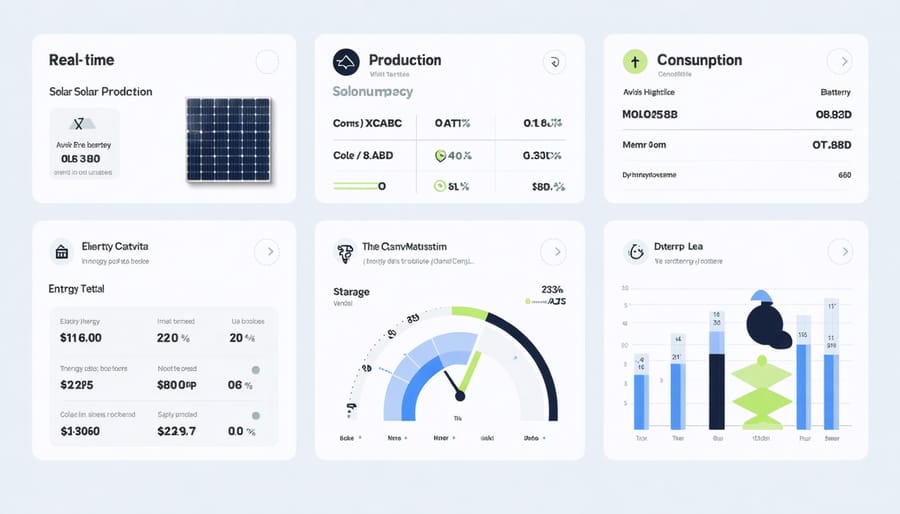
Energy-Efficient Appliances
HVAC System Upgrades
Upgrading your HVAC system is one of the most impactful ways to boost your home’s energy efficiency. Modern heating and cooling solutions offer significant improvements over older systems, with high-efficiency heat pumps leading the way in energy-saving technology. These systems can reduce your energy consumption by up to 50% compared to traditional HVAC units.
Consider investing in a smart thermostat that automatically adjusts temperature settings based on your daily routine. This simple addition can save 10-15% on heating and cooling costs annually. Regular maintenance, including filter changes and professional tune-ups, keeps your system running at peak efficiency.
For maximum benefits, look for ENERGY STAR certified equipment with high SEER ratings (Seasonal Energy Efficiency Ratio). While the upfront cost might be higher, these systems quickly pay for themselves through reduced energy bills. Don’t forget about your ductwork – proper insulation and sealing can prevent up to 30% of heating and cooling loss, maximizing your HVAC system’s performance.
Smart Appliance Integration
Smart appliances are revolutionizing how we manage energy consumption in solar-powered homes. By connecting your appliances to your home’s smart system, you can optimize their operation to coincide with peak solar production hours. Modern smart washing machines, dryers, and dishwashers can be programmed to run during sunny periods when your solar panels are generating maximum power.
Many smart refrigerators and HVAC systems now come with energy monitoring features that help you track consumption patterns and adjust settings accordingly. These appliances can even receive real-time weather data to predict solar generation and automatically adjust their power usage.
Consider investing in a smart home hub that connects your appliances to your solar monitoring system. This integration allows you to view detailed energy consumption data and make informed decisions about when to run energy-intensive tasks. Some systems even offer smartphone apps that let you control appliances remotely, ensuring you’re always making the most of your solar power generation.
LED Lighting Solutions
LED lighting has revolutionized home illumination, offering an incredibly efficient alternative to traditional bulbs. Modern LED bulbs use up to 90% less energy than incandescent lighting while lasting up to 25 times longer. For the average home, switching to LED lighting can reduce electricity bills by $225 annually.
Beyond the impressive energy savings, LED lights offer exceptional versatility. They come in various color temperatures, from warm, cozy glows perfect for living spaces to bright, crisp light ideal for task areas like kitchens and home offices. Many LED options are also dimmable and smart-enabled, allowing you to create the perfect ambiance while maximizing energy efficiency.
Installation is straightforward – most LED bulbs fit standard fixtures, making the switch as simple as changing a light bulb. While LED bulbs cost more upfront, their long lifespan and reduced energy consumption typically pay for themselves within six months to a year.
When shopping for LED bulbs, look for the ENERGY STAR certification and pay attention to lumens (brightness) rather than watts. A 60-watt equivalent LED bulb typically uses only 8-10 watts while providing the same amount of light. Consider installing motion sensors or timers in less-frequently used areas to further reduce energy consumption.
Remember to properly dispose of your old bulbs and check if your utility company offers rebates for LED upgrades. This simple switch not only reduces your carbon footprint but creates a more comfortable, modern living environment.
Water Heating Innovations
Modern water heating innovations offer exciting opportunities to slash your energy bills while reducing your environmental footprint. Start with a high-efficiency heat pump water heater, which can use up to 63% less energy than traditional electric water heaters by pulling heat from the surrounding air to warm your water.
For maximum savings, consider integrating a solar water heating system into your home. These systems use thermal collectors mounted on your roof to harness the sun’s energy, potentially cutting your water heating costs by 50-80%. While the initial investment is higher, federal tax incentives and utility rebates can significantly offset installation costs.
Smart water heaters are another game-changing innovation, allowing you to control temperature settings and heating schedules through your smartphone. This means you can reduce energy use during peak hours and ensure hot water is available exactly when you need it.
Don’t overlook simple yet effective improvements like insulating your water heater and pipes. This affordable upgrade prevents heat loss and can save you 7-16% annually on water heating costs. For immediate savings, adjusting your water heater temperature to 120°F (49°C) provides plenty of hot water while preventing scalding and reducing energy consumption.
Consider installing low-flow fixtures and faucet aerators throughout your home. These inexpensive devices reduce hot water usage without sacrificing comfort, leading to both water and energy savings.
Cool Roofing Options
Cool roofing technology has evolved significantly, offering excellent companions to solar panel installations. Light-colored or reflective roofing materials can reduce your home’s cooling needs by up to 15% by reflecting sunlight rather than absorbing it. Popular options include white metal roofs, which can last 50+ years and reflect up to 80% of solar radiation, and specialized tiles coated with solar-reflective pigments that come in various colors beyond just white.
Cool roof membranes are another excellent choice, particularly for flat or low-slope roofs. These single-ply sheets are specially designed to reflect sunlight and are highly durable. For existing roofs, reflective coatings can transform a traditional dark roof into a cool roof at a fraction of the cost of replacement.
When paired with solar panels, cool roofing creates a synergistic effect. The reduced ambient temperature around the panels helps them operate more efficiently, while the roof’s reflective properties minimize heat absorption in areas not covered by panels. This combination can significantly enhance your home’s overall energy performance and extend the lifespan of both your roof and solar installation.
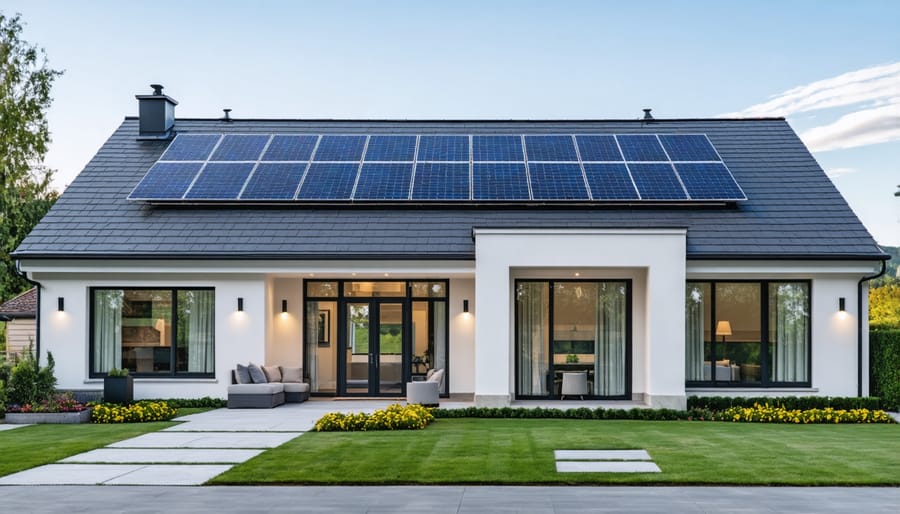
Home Battery Storage
Home battery storage systems are becoming increasingly popular among solar-powered households, offering a smart solution to maximize renewable energy usage. These systems store excess solar power generated during sunny periods for use during nighttime or cloudy days, effectively reducing reliance on grid electricity and lowering utility bills.
Modern battery systems, like the Tesla Powerwall or LG Chem RESU, can power your home during grid outages while maintaining your solar production. When paired with a right-sized solar system, battery storage can help you achieve near energy independence.
Installation costs have decreased significantly in recent years, making battery storage more accessible to homeowners. Most systems are compact, weather-resistant, and require minimal maintenance. They can be monitored through smartphone apps, allowing you to track energy production, storage, and consumption in real-time.
Consider factors like your daily energy usage, peak consumption times, and local utility rates when choosing a battery system. Many utilities offer incentives or rebates for battery installation, making the investment even more attractive for energy-conscious homeowners.
Making your home more energy-efficient isn’t just about reducing utility bills – it’s an investment in a sustainable future and increased home value. By implementing these ten improvements, you can create a more comfortable living space while significantly lowering your carbon footprint. When combined with solar panels, these upgrades can help boost your solar panel performance and maximize your renewable energy investment. Start with one improvement and gradually work your way through the list – every small change contributes to substantial long-term savings. Remember, energy efficiency is a journey, not a destination, and the sooner you begin, the more you’ll save. Take action today to create a more efficient, comfortable, and environmentally friendly home for tomorrow.

